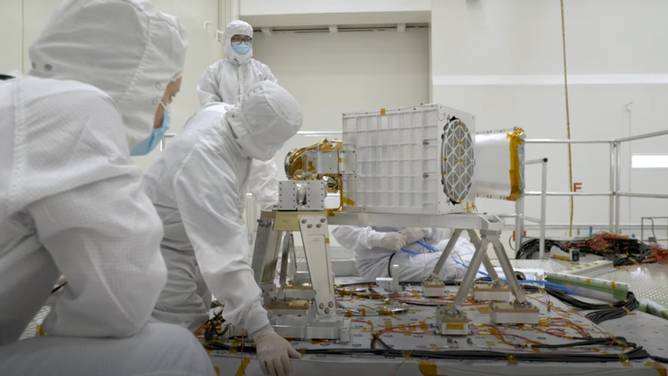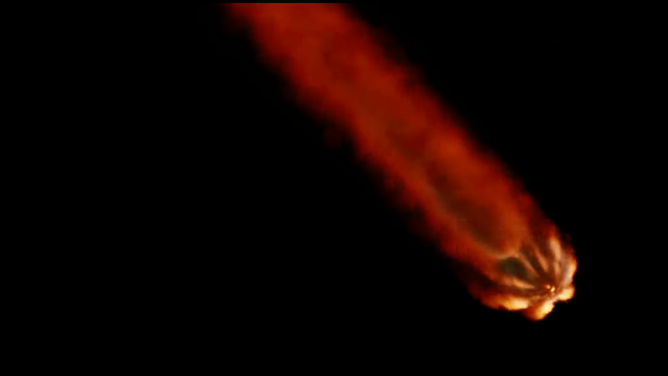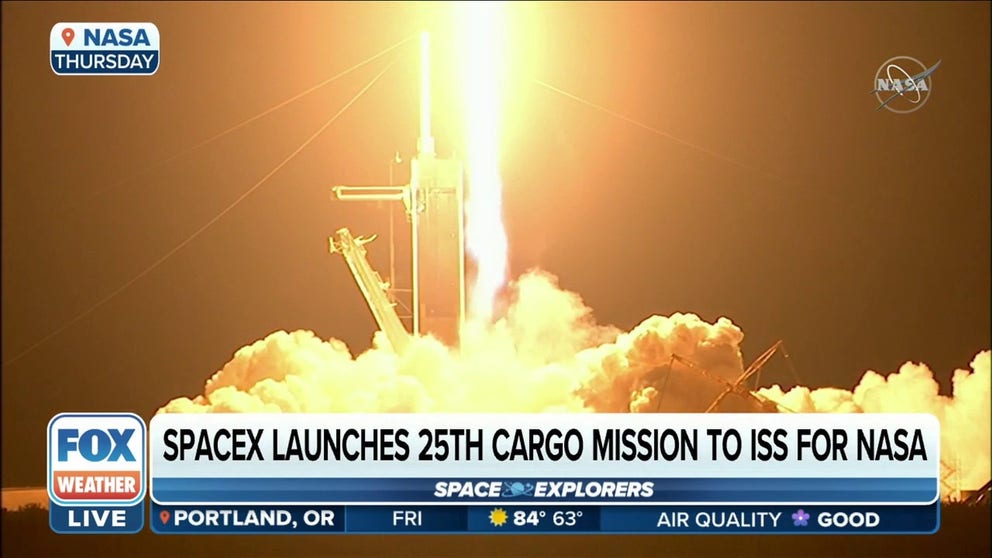SpaceX Falcon 9 launches supplies to space station, including NASA climate science technology
5,800 pounds of supplies launches on SpaceX's 25th cargo re-supply mission for NASA
SpaceX launches 25th cargo mission to ISS for NASA
5,800 pounds of supplies launched on SpaceX's 25th cargo re-supply mission for NASA.
KENNEDY SPACE CENTER, Fla. – Swirling global dust storms are known for sweeping across the Atlantic carrying particles that create colorful sunsets and potential air quality issues, but it's unclear just how much dust events contribute to climate change.
The science team behind a NASA instrument launched Thursday to the International Space Station plans to dig deeper into what these mineral dust events mean for Earth's climate. NASA’s Earth Surface Mineral Dust Source Investigation (EMIT) launched on Thursday along with the rest of the cargo on board SpaceX’s 25th resupply mission to the ISS for NASA.
HOW TO WATCH FOX WEATHER ON TV
Despite active thunderstorms firing off to the west of Florida's Space Coast, the weather stayed clear around the historic launchpad 39A for a twilight liftoff.
The SpaceX Falcon 9 launched at 8:44 p.m. Thursday from Kennedy Space Center with the Cargo Dragon spacecraft filled with 5,800 pounds of supplies bound for the space station.
Florida's active season of afternoon thunderstorms continued for the first half of the week, but by Thursday evening, launch forecasters with the 45th Weather Squadron predicted seabreezes to work in favor of the launch window. According to the forecast, the southeasterly wind pushed the bulk of thunderstorm activity west, clearing the Space Coast in time for liftoff.
FIRST COLOR JAMES WEBB SPACE TELESCOPE IMAGE REVEALS 13-BILLION-YEAR-OLD GALAXIES
The Falcon 9 booster supporting the CRS-25 mission previously launched four times, including two astronaut crews to the ISS, another cargo supply mission and a Turkish communication satellite. The mission marks the third for the Dragon spacecraft which has launched two other cargo missions to the space station.

EMIT instrument being prepped for vibration testing at NASA's Jet Propulsion Laboratory.
(NASA/JPL-Caltech)
After launching and separating from the second stage, the booster autonomously returned to Earth, landing on a droneship in the Atlantic Ocean. The touchdown at sea marked the 130th for a SpaceX booster.
As the booster came back down to Earth, slowing down for a controlled landing, the twilight hour provided beautiful background lighting creating a "jellyfish" in the sky.

A Falcon 9 rocket flies through the sky creating a fireball above the Florida coast on July 14, 2022. (Image: SpaceX)
The Cargo Dragon now en route to the ISS is loaded with supplies, science investigations and groceries for the astronauts living and working in orbit.
Besides the EMIT instrument, there are other investigations launching on CRS-25 that will benefit climate research.
The BeaverCube is a tiny shoe-box-size satellite from the Massachusetts Institute of Technology designed to monitor cloud top and ocean temperatures. The spacecraft has three cameras using infrared and visual light that will be documenting the tops of clouds and the surface of the ocean.
"The visual spectra camera is going to take pictures, color pictures, of the ocean so we can track plankton, which is a very important factor in producing atmospheric oxygen," MIT BeaverCube engineering and testing lead Paula do Vale Pereira said.
One area BeaverCube will document is off the coast of Massachusetts.
"There are a lot of impacts of climate change on the water of Massachusetts. It is getting very much warmer. It is actively impacting the water concentration of animals and sea life in there," do Vale Pereira said. "So we are going to focus on taking pictures and checking the temperature and conditions of that region."
The 13-inch spacecraft will also be testing a new propulsion system by Axiom Systems which will use water to boost the spacecraft in orbit.
Dragon will dock on July 16 at the Harmony model where NASA astronauts Jessica Watkins and Bon Hines will monitor the approach from inside the ISS.
